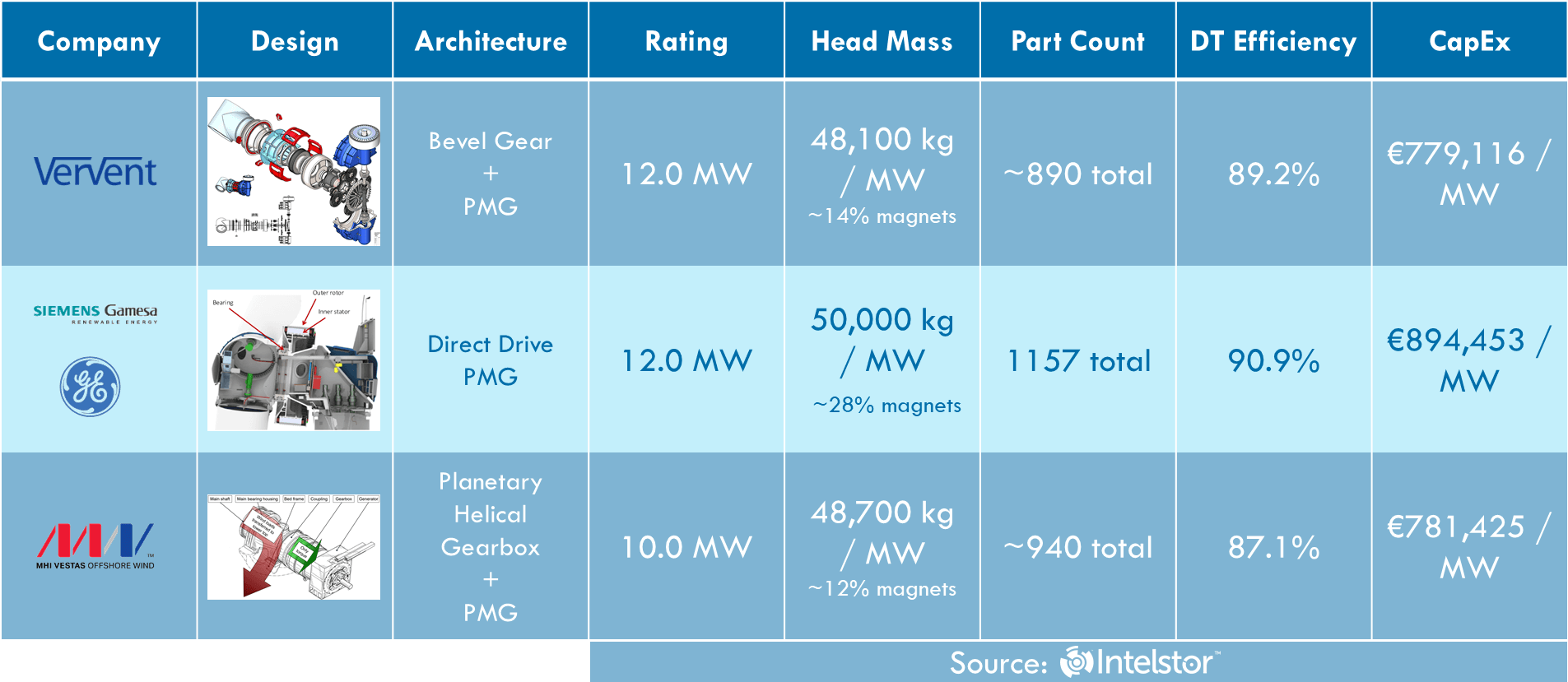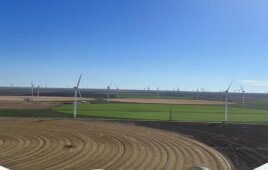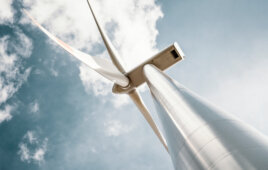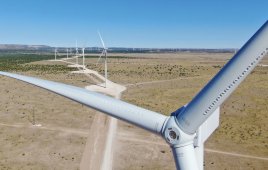As the global offshore wind energy market appears poised for significant growth in the coming years, that growth will be driven by demand and cost reductions in new technology, according to IntelStor, a cloud-based market intelligence platform for renewable energy.

VerVent has an offshore wind turbine that is scalable up to 16 MW. Learn more here.
IntelStor has previously predicted a global offshore wind market of 355 GW by 2050, up significantly from the current levels of ~49 GW, which is expected to be installed globally by the end of 2019.
As the industry looks towards a bright future, it must also be recognized that within the offshore wind energy supply chain, the market is largely controlled by three major OEMs: Siemens Gamesa Renewable Energy, MHI Vestas Offshore Wind, and GE Renewable Energy.
While Senvion and other Asian manufacturers such as Ming Yang, Goldwind, Shanghai Electric, Guodian UP, CSIC, Hitachi and Doosan are all engaged in the market, none appear to have the right type of capital structure, or bankable and competitive technology to engage the global market in a robust way.
The two largest governing influences on offshore market for the offshore supply chain viability are product bankability and reliability. If one looks at the current competing designs in the 10 to 12-MW range, it is important to take note of the pedigree of the companies behind these current generation of products. All have proven to provide bankable technology in the onshore and offshore wind energy markets, and we also take note of the level of investment which has been required in the non-recurring engineering costs involved to bring these products to market.
When considering the scope of technology, most companies have shifted towards a low-speed drivetrain with either a direct-drive or 1 to 2-stage gearbox coupled to a permanent-magnet generator. By comparison, most other OEMs involved in the offshore wind market all have a comparable design with a smaller order book, implying less economies of scale. Some of these OEMs indeed have fundamentally uncompetitive technology, having scales up a doubly-fed induction generator (DFIG) and three-stage gearbox beyond the 5 to 6-MW range.
Efficiency losses and a high part count make these designs less desirable in an offshore market environment at power ratings in the 12 to 16-MW range which we are now poised to enter. Nevertheless, to only have three mainstream OEMs in the offshore wind market is problematic for project developers and financiers as we chase subsidy-free tenders in global markets.

While most mainstream offshore supply chain companies are striving towards higher power ratings above the 10 to 12M-W range, the market can expect more options available to them in the future.
The offshore wind energy market has a distinct need for a fourth or even a fifth mainstream OEM who presents the market with viable technology and maintains price competition amongst the supply chain, thereby incentivizing further cost reductions.
Additionally, any wind turbines which can minimize the rare earth material usage will be preferred looking ahead into the future. This is because of the potential shortages in the availability of rare earth elements used to make the permanent magnets in the generators of offshore turbines due to Chinese supply constrictions in response to trade disputes with the United States.
Less availability of raw material implies higher prices, so designs which limit part count will be highly prized.
Enter Dutch company VerVent, with an offshore wind turbine that is scalable up to 16 MW, comprising a 1.5-stage, bevel-type gearbox and a counter rotating generator. This design comprises minimal moving parts as well as a limited amount of active material (i.e. permanent magnets, which are in use(. This means that VerVent can achieve a 16-MW power rating with roughly the same composition of magnets as GE Renewable Energy has in their Haliade-X 12-MW turbine.
VerVent is founded by Hans Bais and is backed by a team, each of whom has between 30 to 35 years of experience in the wind energy industry. In 2006, the founders of VerVent established Darwind, the 5-MW direct-drive wind turbine manufacturer, which was successfully sold off to XEMC of China in 2008. Their new design is compelling and noteworthy, according to IntelStor, because it minimizes technology and commercial risks by using a proven set of supply chain partners including Siemens, Renk, Eolotec, Geislinger and Siempelkamp — in an effort to maximize margins and minimize cost-of-energy (COE).
This is achieved through a drivetrain architecture which has been used on other types of high-torque applications in the past and is being adapted for use in wind energy.
Coupled with a stringent testing regime, the VerVent technology can be a market-ready solution in as little as 24 months, which allows this technology to be fully exploited in emerging offshore markets with high growth potential including the U.S., Japan, Việt Nam, South Korea, Turkey, India, Australia, Azerbaijan and Brazil. While most mainstream offshore supply chain companies are striving towards higher power ratings above the 10 to 12-MW range, the market can expect more options available to them in the future.
Filed Under: Featured



